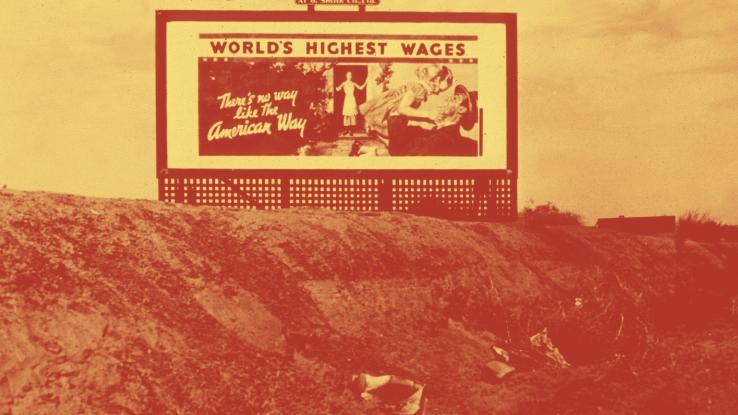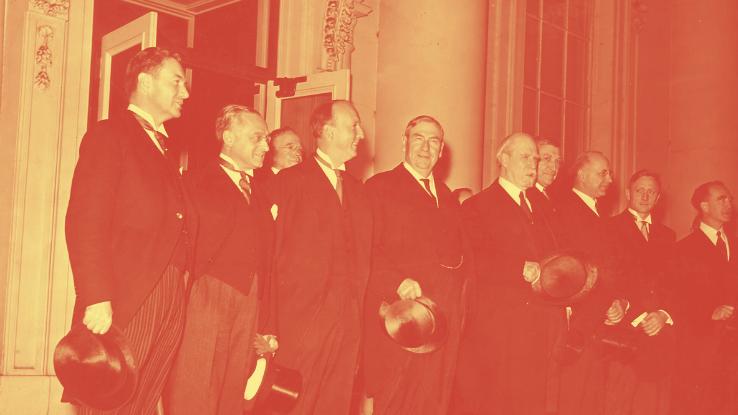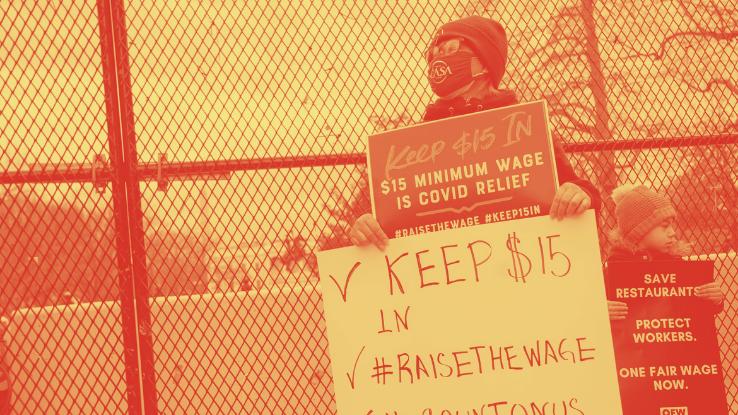How To Find Out Why Your Wages Are Being Garnished

In 1938, Congress passed the Fair Labor Standards Deed. This legislation affirmed that workers are entitled to a certain corporeality of compensation for their labor by instituting the first federal minimum wage in the United States. But the chat didn't stop there. In fact, since its introduction, the federal minimum wage has been raised 22 times. Even today, minimum wage — which isn't inherently adapted to reflect higher costs of living — remains a hotly debated topic.
While the 1938 legislation marked an important first in U.S. history, laborers' push for a fair minimum wage actually had its mod-solar day origins in France a century before. In 1831, silk industry workers in Lyon went on strike, demanding a livable minimum wage. Over 60 years later, New Zealand became the kickoff nation to found a federal minimum wage with its 1894 Industrial Conciliation and Arbitration Act. In observance of National Poverty Awareness Calendar month, nosotros'll hash out the history of the federal minimum wage and its numerous changes.
The History of the Federal Minimum Wage in the United states of america
New Zealand's actions helped inspire minimum wage advocates in the United States. According to History, "Samuel Gompers, founding president of the American Federation of Labor, publishe[d] an commodity entitled 'A Minimum Living Wage,' in which he advocates not simply setting a legal threshold for wages, simply besides requiring information technology to be plenty for workers to live." Needless to say, this article marked a turning bespeak in the U.Due south.

Finally, 14 years later on Gompers' article cracked the chat wide open, Massachusetts enacted the start minimum wage law in the U.Due south. By the following twelvemonth, eight other states, from California to Minnesota, followed suit. Yet, a setback came in 1923 when the U.S. Supreme Court ruled that a state authorities could not ready a minimum wage; according to the Court, doing so would violate a precedent fix forth in the Fifth Amendment.
Merely a decade later, Americans found themselves navigating the Great Depression. In an endeavor to help workers and rebuild the economy, President Franklin D. Roosevelt rallied Congress to back up the National Industrial Recovery Act (NIRA), which "suspends antitrust restrictions and allows industries to enforce their own fair-merchandise codes" (via History). Additionally, FDR encouraged employers to pledge to offer $12 to $15 weekly wages; in exchange, employers would exist able to display "We Do Our Function" badges, reinforcing the sense of pride and patriotism the federal regime was hoping to inspire in the confront of the Groovy Low (and, later, Globe War II). In the terminate, these efforts encouraged various industries to enact minimum wage codes.
In 1935, the NIRA codes faced pushback from the Supreme Court, which, in turn, made minimum wage the hot-button issue of the upcoming presidential election. However, things took a real turn in 1937 when Elsie Parrish, a maid at the Cascadian Hotel in Wenatchee, Washington, sued her onetime employer on the grounds that she was owed back pay in accordance with Washington'southward weekly minimum wage law. Since the Courtroom had previously ruled that "any form of law establishing wages" was unconstitutional, the ruling on West Declension Hotel Co. v. Parrish came equally a shock. Described by historians as the "big switch," the Court ruled in favor of Parrish — and Washington'south minimum wage laws.
This landmark ruling opened the door for Congress to pass the Fair Labor Standards Act, which formally established a federal minimum wage. At the fourth dimension, that minimum wage was 25 cents per hour; by 1949, Congress raised the minimum to 75 cents, marking the showtime of the 22 increases.
Today, the federal minimum wage applies to workers who are employed past businesses that brand at to the lowest degree $500,000 in revenue every bit well as folks who piece of work in schools, hospitals, nursing homes, and authorities agencies. Additionally, workers who are involved in "interstate commerce" are as well subject to minimum wage protections (via U.S. Department of Labor).

Although things have certainly changed over the years, many feel the fight for establishing a off-white federal minimum wage is far from over. As mentioned in a higher place, much of this feeling comes from the fact that the minimum wage doesn't automatically conform based on increased costs of living. Every bit of January 2022, the federal minimum wage is even so set at $vii.25 — and has been since 2009. Meanwhile, the toll of living in the U.S. continues to climb.
More recently, attempts to business relationship for these cost of living increases have been undertaken on a land-by-land basis. In 2016, both California and New York raised the minimum wage to $15 per hour (though it should exist noted this increase to $15 is happening gradually). In total, 29 states (and Washington D.C.) have a higher minimum wage than the minimum set forth by the federal authorities, and, of those states, viii of them raise those wages in accord with increases in the price of living.
Now, the COVID-19 pandemic has further emphasized the fact that many workers practice non brand plenty coin to beget basic necessities, like hire, food and healthcare-related expenses. So, what's being done? On Feb 27, 2021, the U.S. Business firm of Representatives passed the American Rescue Plan Act of 2021, a $1.nine trillion COVID-19 relief package that aims to extend unemployment benefits; provide aid to small businesses and nonprofits; cut $1,400 relief checks to Americans; and, perhaps surprisingly, innovate a $xv federal minimum wage.
Reportedly, this increase, which would happen gradually until being fully realized in 2025, would have "boosted pay for some 32 million workers" (via CNBC). Nosotros say "would have" because in the get-go few days of March, as the American Rescue Program Act moved to the Senate, the minimum wage provision was scrapped. Co-ordinate to Senate parliamentarian Elizabeth MacDonough, the provision did not comply with the rules of upkeep reconciliation.
While some Democrats have urged Vice President Kamala Harris to overrule MacDonough, it doesn't seem like the White House will do so, despite previously supporting a minimum wage increase. For now, it seems like a federal minimum wage increment is off the tabular array, but information technology'southward clear that lawmakers — and everyday Americans — won't terminate fighting for it. Moreover, many states are raising their minimum wage rates irrespective of federal policies.
Source: https://www.reference.com/business-finance/federal-minimum-wage-3fcaa76aed287408?utm_content=params%3Ao%3D740005%26ad%3DdirN%26qo%3DserpIndex
Posted by: coatesperis1986.blogspot.com


0 Response to "How To Find Out Why Your Wages Are Being Garnished"
Post a Comment